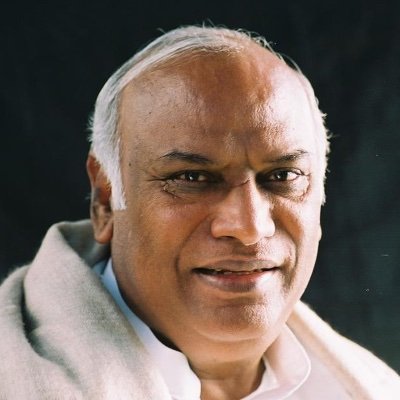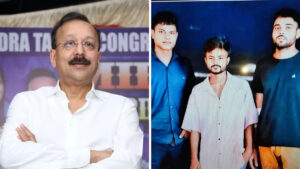In a significant move, Congress Chief Mallikarjun Kharge has reconstituted the Congress Working Committee (CWC), the party’s top decision-making body. The newly-formed CWC comprises a total of 84 members, making it arguably the largest in history. This article explores the key developments and implications of this reshuffling, analyzing the composition of the CWC and the party’s efforts to strike a balance between seasoned leaders and the younger generation.

The ’50-Under-50′ Criteria
One of the notable aspects of the CWC reconstitution was the Congress party’s initial plan to have 50 percent of the permanent members under the age of 50. This criterion was first outlined during the Congress’s Udaipur Chintan Shivir and later reiterated in the party’s plenary session in Raipur. However, despite these declarations, only three leaders under the age of 50 were included as permanent members in the CWC: Sachin Pilot, Gaurav Gogoi, and Kamleshwar Patel. Consequently, the CWC failed to meet the ’50-under-50′ target set by the party.
The Influence of the Gandhi Family
The composition of the newly-reconstituted CWC reflects the continued influence of the Gandhi family within the party. Many loyalists to the Gandhi family have retained their positions in the apex decision-making body. However, there also seems to be an attempt to placate disgruntled leaders such as Shashi Tharoor, Sachin Pilot, and Manish Tiwari, who is a permanent invitee. Tharoor, a member of the G-23 group of rebel leaders, has faced resistance and non-cooperation from certain factional leaders in Kerala.
Inclusion of Rebel Leaders and Fresh Faces
As a gesture towards inclusivity and addressing internal dissent, the Congress party has nominated some rebel leaders and fresh faces as permanent members of the CWC. From the G-23 group, Tharoor, Tewari, Mukul Wasnik, and Anand Sharma have been included. This move aims to revitalize the Congress by accommodating differing viewpoints within the party. Additionally, former student leader Kanhaiya Kumar and former Punjab chief minister Charanjit Singh Channi have also been appointed as permanent members of the CWC.
Ensuring Regional Representation
The inclusion of leaders like Tamradhwaj Sahu, a strong factional leader in Chhattisgarh, suggests that the party is mindful of the upcoming state polls and the need for regional representation. The Congress aims to strike a balance between experienced leaders and emerging voices from different regions of the country. This strategy reflects the party’s desire to connect with voters at the grassroots level and regain its political footing.
Expansion of the CWC
Following the party’s plenary session in Raipur, it was announced that the CWC would be expanded from 23 to 35 permanent members. However, the recently released list extended the limit further to accommodate 39 permanent members. This expansion indicates the party’s intent to broaden its representation and bring in fresh perspectives.
Horizontal Reservation and Marginalized Communities
In line with the party’s commitment to inclusivity, the Congress had announced that the new CWC would have horizontal reservation for leaders from scheduled castes, scheduled tribes, other backward classes, minority communities, and women. The finalized list of permanent members reflects this commitment, with 20 out of the 39 members belonging to marginalized categories. This move aims to empower underrepresented groups within the party and ensure diverse representation.
Retention of Loyalists and Key Figures
The composition of the CWC also includes several loyalists to the Gandhi family, such as Jitendra Singh, Randeep Surjewala, and K.C. Venugopal. These leaders have been retained in their positions, emphasizing the importance of continuity and experience within the party. Ambika Soni, known for her loyalty to Sonia Gandhi, has also retained her place in the CWC. Additionally, Minakshi Natarajan, a loyalist to Rahul Gandhi, has been included as a permanent invitee.
Notable Exclusions and Omissions
While the new CWC accommodates several leaders, there are notable exclusions and omissions from the previous committee. Leaders such as K.H. Muniyappa, P.L. Punia, Pramod Tiwari, Rajani Patil, Raghu Sharma, and Dinesh Gundu Rao did not make it to the reconstituted CWC. The reasons for their exclusion remain unknown, but this reshuffling highlights the party’s intent to forge a new path and bring in fresh faces.
Young Leadership and Special Invitees
To infuse the party with a sense of dynamism and youthfulness, the CWC includes young leaders as special invitees. Alka Lamba, Pawan Khera, Supriya Shrinate, Praniti Shinde, and Vamshi Chand Reddy have been appointed as special invitees, bringing their unique perspectives and energy to the decision-making process. This move demonstrates the party’s recognition of the importance of young leadership and their potential to shape the future of the Congress.
Conclusion
The reconstitution of the Congress Working Committee marks a new era for the party, with an expanded membership and an emphasis on inclusivity and regional representation. While the ’50-under-50′ criteria were not fully met, the inclusion of young leaders like Sachin Pilot and the appointment of rebel leaders demonstrate the party’s commitment to nurturing emerging talent and accommodating diverse viewpoints. The composition of the CWC reflects a careful balance between experienced loyalists and fresh faces, laying the foundation for a rejuvenated Congress party.







